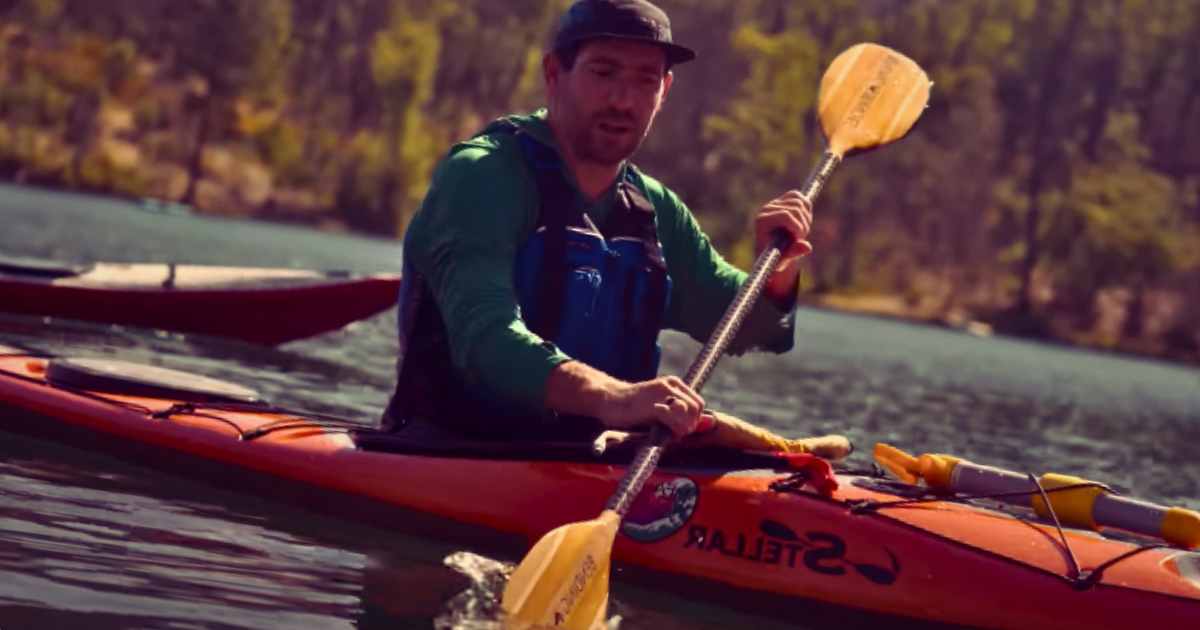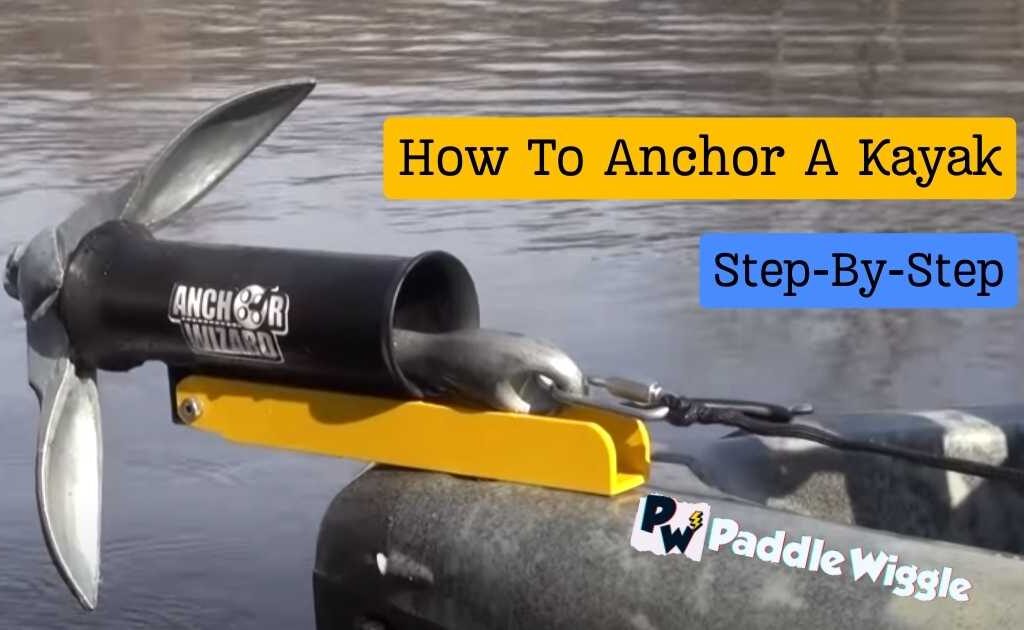Tandem or single kayaks? Choosing the right type of kayak can make or break your paddling experience. When it comes to kayaking, one of the first decisions you’ll need to make is whether to paddle solo in a single kayak or team up with a partner in a tandem kayak. Each option offers a unique set of advantages and considerations that can significantly impact your kayaking experience.
But which one is best for your adventure? Well, tandem kayaks are designed for two paddlers, making them ideal for couples, friends, or families looking to explore rivers together. These boats offer shared experiences and foster a sense of teamwork as you navigate the waterways.
On the other hand, single kayaks are perfect for those seeking solitude and independence on the river. They provide complete control over your paddling experience, allowing you to set your own pace and explore at your leisure.
In this comprehensive guide, we’ll help you make this important decision by exploring the key factors to consider when choosing between tandem and single kayaks. Whether you’re an experienced kayaker choosing the right kayak for a specific trip or just planning your first adventure, this article has got you covered.
Let’s jump in and find out which kayak is the right fit for your next adventure!
Contents


Understanding Tandem Kayaks And Their Use
Tandem kayaks are a type of kayak that allows two people to paddle together. These kayaks are longer and wider than single kayaks, with a hull specifically crafted to accommodate two people sitting side by side or in a front-and-rear configuration. They offer an exciting opportunity for shared experiences and teamwork during paddling adventures.
Tandem kayaks are popular for recreational use. They provide an opportunity for couples, friends, or family members to enjoy outdoor adventures together, exploring lakes, rivers, and coastal areas. These kayaks are suitable for longer excursions. Their increased length and stability make them great for touring calm waters and exploring scenic routes.
Whether you’re exploring calm lakes or tackling thrilling rapids, tandem kayaking can be a fantastic way to bond with a partner or family member on the water.
One of the advantages of tandem kayaks is their stability. These kayaks are made for people who are just starting or like to take it easy. They’re designed to make you feel steady and safe. Tandem kayaks, which are wider and longer, are even better at keeping you stable so you can enjoy the water with confidence and comfort.
Pros of Tandem Kayaks


- Shared Experience: Tandem kayaking allows you to share the joy and excitement of being out on the water with someone else. It’s an excellent way to create lasting memories and strengthen relationships.
- Teamwork: Paddling at the same time as your partner means you both need to work together and talk to each other. This helps you become better at working as a team and getting things done together.
- Increased Stability: Tandem kayaks are better at staying steady compared to single kayaks. This makes them a great choice for people who are new to kayaking or feel a bit worried about keeping their balance in a kayak.
- More Space: With two people in a tandem kayak, you have more room for gear, snacks, and other essentials needed for your adventure.
- Efficient Paddling: When you paddle with others, you can go further with less work than paddling by yourself.
Cons of Tandem Kayaks
- Limited Independence: Sharing a kayak means both people have to agree on which way to go and how fast to paddle. It’s like teamwork on the water! Communication is key.
- Weight Distribution Challenges: In tandem kayaks, it’s really important to sit in the right way so that the kayak stays balanced. If you don’t, it might tip over. This requires good communication between both paddlers.
- Potential Disagreements: When you’re in a small space with someone, you might not always agree. To have a good time paddling together, it’s important to talk openly and be patient with each other. This will make everything go smoothly.
Tandem kayaks come in various designs, including sit-on-top and sit-inside models. Sit-on-top tandem kayaks are easier for beginners because they’re simple to get in and out of. They’re also good for people who don’t like feeling closed in. On the other hand, sit-inside tandem kayaks protect you better from the weather, like rain or wind. These are usually chosen by people who are more experienced at kayaking.
Understanding Single Kayaks And Their Use


If you prefer to paddle solo, then a single kayak might be just the right choice for you. Single kayaks are like your own adventure ride. You get to go wherever you want, as fast or slow as you like, all on your own. These kayaks are made for just one person, and they’re really good at turning and moving around easily, better than the two-person ones.
A cool thing about using a single kayak is that it’s great at going through tight spots in the water. Because it’s smaller and lighter, you can easily steer around things like rocks or tree branches that are in your way. This makes it perfect for checking out twisty rivers or secret spots that bigger boats can’t get to.
Solo kayaking also offers a unique opportunity for personal reflection and solitude in nature. It allows you to connect with the environment around you in a more intimate way. Whether it’s gliding through calm waters or challenging yourself against the currents, solo kayaking can be a meditative experience that brings peace and tranquility.
Here are some characteristics and uses of single kayaks:
Better Maneuverability
- Single kayaks are smaller and more agile than tandem kayaks.
- They have a narrower hull design, making them easier to turn and control.
- This allows for greater precision when navigating tight spots or avoiding obstacles.
Independence and Freedom
- Solo kayaking gives you the freedom to explore at your own pace.
- You can choose your own route, stop whenever you want, and take breaks as needed.
- There’s no need to coordinate with a partner or compromise on where to go next.
Personal Reflection
- Paddling alone gives you time for self-reflection and introspection.
- It provides an opportunity to disconnect from the hustle and bustle of daily life.
- You can immerse yourself in nature, listen to the sounds of birds chirping, or simply enjoy the peacefulness of being on the water.
Versatility
- Single kayaks come in various styles and designs to suit different preferences.
- They can be used for recreational paddling, fishing, or even for more adventurous activities like whitewater kayaking.
- Some single kayaks are specifically designed for touring, with added storage space for overnight trips.
Solo vs. Tandem Kayaking: Weighing the Pros and Cons
Considering a kayaking adventure? The choice between solo and tandem kayaking can make all the difference. Each option has its own set of pros and cons that are worth considering before making a decision.
To help you make a choice, we’ve made a simple table that shows the good things and the not-so-good things about each option.
Let’s break down the pros and cons of solo and tandem kayaking to help you make an informed choice that aligns with your kayaking goals and expectations.
| Aspect | Solo Kayaking | Tandem Kayaking |
|---|---|---|
| Independence | + Complete control and independence on the water | – Shared control and coordination required |
| Social Experience | – Solitary experience | + Enhanced social experience with a partner |
| Stability | – May feel less stable, especially for beginners | + Generally more stable due to wider hull |
| Efficiency | – May require more effort to cover distances | + Shared workload results in increased efficiency |
| Maneuverability | + More maneuverable for tight spaces | – Less maneuverable in comparison |
| Cargo Capacity | – Limited cargo space | + Higher capacity for gear and equipment |
| Skill Development | + Ideal for improving individual skills | – May not challenge paddlers as much individually |
| Communication | N/A | – Effective communication between paddlers is crucial |
| Cost | – Generally more affordable | + Tandem kayaks are often pricier |
| Transport & Storage | + Lighter and easier to transport and store | – Heavier and potentially harder to transport |
| Common Uses | – Suitable for solo exploration and skill-building | + Great for recreational, touring, fishing, etc. |
Pros of Tandem Kayaking
Tandem kayaking, where you paddle with a partner or friend, can be an exciting and enjoyable experience. Here are some pros to consider:
- Shared experience with a partner or friend: Tandem kayaking means you and a friend can have an adventure together, make special memories, and have fun while you paddle.
- Enhanced stability: With two people paddling in sync, tandem kayaks tend to have better stability compared to solo kayaks. This can be especially beneficial for beginners who may feel more secure in a stable boat.
- Easier transportation due to larger size: Tandem kayaks are usually bigger than solo kayaks. This means they have more space to store your gear and stuff. Plus, because they’re larger, they’re easier to carry because two people can share the weight.
Cons of Tandem Kayaking
While tandem kayaking has its advantages, there are also some drawbacks to consider:
- Potential conflicts in communication or coordination: When you’re paddling with someone, it’s really important to talk to each other and work together. If you don’t communicate well or don’t agree on how to paddle or where to go, it can make you both feel upset and cause problems.
- Limited individual control over direction: In a tandem kayak, both paddlers need to work together to steer the boat. This means that you may need more control over the direction you want to go in. It requires compromise and teamwork.
Pros of Solo Kayaking
If you prefer going on adventures alone and having full independence during your kayak trips, solo kayaking might be more suitable for you. Here are some pros of solo kayaking:
- Complete independence in decision-making: When you’re paddling solo, all decisions about where to go and how fast or slow to paddle are entirely up to you. You have the freedom to explore at your own pace and follow your instincts.
- Greater maneuverability in tight spaces: Solo kayaks tend to be smaller and more agile than tandem kayaks, allowing you to navigate through narrow waterways or tight spaces with ease.
Cons of Solo Kayaking
While solo kayaking offers independence, there are a few downsides as well:
- Lack of companionship during the adventure: Unlike tandem kayaking, where you have someone to share the experience with, solo kayaking can sometimes feel lonely. If you enjoy the company of others during outdoor activities, solo kayaking may provide a different social aspect.
Factors to Consider when Choosing a Kayak
Assessing your paddling abilities is crucial when deciding between tandem and single kayaks. When you’re picking a kayak, it’s important to think about what you want to use it for, like just paddling for fun or maybe going fishing. It would help if you also thought about where you’ll keep it, how you’ll move it around, and how much money you want to spend. All of these things are really important when you’re making your decision.
Skill Level
Before choosing between a tandem or single kayak, it’s essential to assess your skill level. If you’re a beginner or have limited experience with kayaking, starting with a single kayak might be more suitable. Single kayaks are generally easier to maneuver and control compared to tandems. They offer better stability and allow you to focus solely on your own paddling technique.
On the other hand, if you have advanced paddling skills or plan to paddle with someone who has experience, a tandem kayak can be an excellent option for enjoying the water together.
Purpose
Consider how you plan to use your kayak. Are you looking for a vessel primarily for recreational purposes? Or do you intend to engage in activities like fishing or touring? Single kayaks are versatile and suitable for various activities. Tandem kayaks are great because they can move around easily and let you explore different water areas for fun paddling. They are perfect if you want to kayak with family or friends while still enjoying the water.
Storage and Transportation
Another crucial factor to consider is storage and transportation. Do you have ample space at home or in your vehicle to store and transport a larger tandem kayak? Tandem kayaks are typically longer and heavier than single ones, requiring more storage space both indoors and outdoors. If storage space is limited or if you need access to a large vehicle for transportation, opting for a single kayak might be more practical.
Budget
Evaluating your budget is essential when choosing a kayak. Tandem kayaks tend to be more expensive than single kayaks due to their larger size and capacity. However, there are affordable options available in both categories. It’s important to strike a balance between your needs and your budget when making a decision.
Consider the features you require and compare prices across different brands to find a kayak that meets your needs without breaking the bank.
Ease of Use and Maneuverability: Single vs Tandem Kayaks
Single kayaks are made for one person, and they’re easier to handle because they’re smaller and lighter. They can move around easily, so you can go through narrow spots and turn quickly without any problems.
On the other hand, tandem kayaks are designed for two paddlers, offering a shared experience on the water. While they may require more coordination between the paddlers, tandem kayaks can be more stable and offer better tracking, making it easier to paddle in a straight line.
Let’s dive deeper:
Single Kayaks: Easy to Maneuver
Single kayaks are generally easier to maneuver due to their smaller size and lighter weight. With a single kayak, you have full control over the boat’s movement, making it easier to navigate through tight spaces or around obstacles. The compact size allows for quick turns and agile movements on the water.
Pros:
- Easier to control and maneuver.
- Quick decision-making without relying on another person’s input.
- It is ideal for solo adventurers who prefer independence.
Cons:
- Limited space for gear or additional passengers.
- It can be more physically demanding due to paddling alone.
Tandem Kayaks: Coordination is Key
On the other hand, tandem kayaks require coordination between paddlers for efficient maneuvering. Both paddlers need to work together in sync, communicating effectively to steer the kayak in the desired direction. This coordination can take some practice and may require patience as you get used to working as a team.
Pros:
- Allows for shared experiences with a partner or friend.
- Perfect for couples or families who want to paddle together.
- Offers more storage space for gear or additional passengers.
Cons:
- Requires coordination between paddlers.
- Decision-making may take longer since both individuals need to agree.
Assessing Skill Level for Tandem or Single Kayaking
Assessing your skill level is crucial when deciding whether tandem or single kayaking is the right choice for you. Let’s explore some guidance on evaluating your skills for both types of kayaking.
tandem kayaking Is more suitable For Beginners
If you’re new to kayaking, starting with a tandem kayak can be a great option. Tandem kayaks are designed to accommodate two paddlers, allowing beginners to share the responsibility and gain confidence on the water. These kayaks provide excellent stability, making them easier to maneuver for those who are still learning the ropes. With a partner by your side, you can work together and navigate through the waters more comfortably.
solo kayaking is Better For Experienced paddlers
If you’re really good at kayaking and want an exciting adventure, going solo in a kayak gives you a lot of control and freedom on the water. It’s like having your own kayak that you can steer just the way you want. You can get really good at it and go through tricky places with a lot of skill. You get to choose where to go and what to do all by yourself. It’s like being the boss of your own journey on the water.
Assessing your skill level Before Choosing Between tandem or single kayak
To determine which type of kayaking suits you best, it’s important to assess your skill level honestly. Consider the following factors:
- Experience: Are you a beginner or an experienced paddler? Evaluate your comfort level on the water and your familiarity with kayaking techniques.
- Confidence: How confident do you feel in controlling a kayak? Assess whether you have the necessary skills to paddle independently or if having a partner would boost your confidence.
- Physical Fitness: Kayaking requires physical stamina and endurance. Reflect on your fitness level and consider how it may impact your ability to paddle solo for extended periods.
- Navigation Skills: Evaluate your ability to read maps, understand currents, and make informed decisions about routes and potential hazards.
By honestly assessing these factors, you can better determine whether tandem or single kayaking aligns with your current skill set and preferences.
Remember, there’s no right or wrong choice.
Single or Tandem Kayak: Which One Is Best For You?
Determining the right kayak for your adventure is crucial to ensure a comfortable and enjoyable experience. However, there are several factors to consider when determining the right kayak type for your adventure.
Let’s explore them.
Personal Preferences
The first thing to think about is your personal preference. Do you enjoy the solitude and freedom of exploring on your own? Or do you prefer sharing the experience with others? If you love the idea of having complete control over your trip and being able to paddle at your own pace, a single kayak might be the way to go.
On the other hand, if you enjoy the camaraderie and teamwork that comes with paddling with a partner or friend, a tandem kayak could be more suitable.
Solo vs. Partner/Friend
Consider how often you plan to go kayaking alone versus with someone else. If you think you’ll be going on solo adventures a lot, get a single kayak. It gives you the freedom you want. But if you often have a friend who wants to join your kayaking trips, go for a tandem kayak. It lets both of you have fun together and paddle at the same time.
Water Conditions
Think about the type of water conditions you will encounter during your adventures. Are you planning on paddling mainly in calm lakes or slow-moving rivers? Or do you envision tackling rougher waters, such as open seas or fast-flowing rapids?
Single kayaks are great at turning and reacting quickly, so they’re good for exciting trips with tough conditions. But tandem kayaks are more stable and can handle bigger waves, which makes them good for relaxed trips in calm waters.
Purpose and Style
Lastly, consider what purpose and style align with your adventure goals. Are you looking for a kayak that allows you to explore hidden coves and navigate through narrow waterways? A single kayak’s agility and compact size make it perfect for such explorations. However, if your goal is to enjoy a leisurely day on the water, perhaps picnicking or fishing, a tandem kayak offers more space and versatility.
Exploring Different Scenarios: When to Choose Tandem or Single Kayak
In the world of kayaking, there are various scenarios where you might find yourself debating whether to choose a tandem kayak or a single kayak. Let’s dive into these different situations and explore when each option is more suitable.
Scenario 1 – Family outing
If you’re planning a fun-filled family outing on the water, opting for a tandem kayak is an excellent choice. With a tandem kayak, everyone can paddle together, fostering family bonding and creating lasting memories. It’s like having your own little floating team! Plus, it’s great for parents who want to keep an eye on their kids while enjoying the adventure themselves.
Pros:
- Allows everyone to paddle together
- Promotes family bonding and teamwork
- Perfect for parents with young children
Cons:
- Requires coordination and communication between paddlers
- It may be slower than a single kayak due to added weight
Scenario 2 – Solo Exploration
Sometimes, all you need is some alone time on the water to recharge your batteries and connect with nature. In such cases, choosing a single kayak is the way to go. A single kayak offers you the freedom to explore at your own pace and enjoy solitude. You can paddle wherever you want without any distractions or compromises.
Pros:
- Provides independence and freedom
- Enables solo adventurers to enjoy solitude
- Allows for flexibility in exploring different areas
Cons:
- No shared experience or teamwork
- Limited space for carrying extra gear or equipment
Scenario 3 – Group adventure
When planning a group adventure with friends or colleagues, tandem kayaks are an ideal choice. They promote teamwork and shared experiences as you navigate through the waters together. Whether it’s racing against each other or simply enjoying each other’s company while paddling side by side, using tandem kayaks enhances the overall enjoyment of the trip.
Pros:
- Encourages teamwork and cooperation
- Enhances social interaction and shared experiences
- Great for group races or competitions
Cons:
- Requires coordination between paddlers to stay in sync
- It may be slower compared to single kayaks due to added weight
Scenario 4 – Fishing expedition
If your main goal is to embark on a fishing expedition, then a single kayak is the better option. Single kayaks provide better maneuverability, allowing you to navigate through tight spots and reach fishing hotspots with ease. They offer more space for storing fishing gear and equipment.
Pros:
- Better maneuverability for reaching fishing spots
- More storage space for fishing gear
- Allows anglers to focus solely on their fishing activities
Cons:
- No companion to share the experience with
- Limited seating options if you want to bring along a friend
Final Words
Finally, tandem kayaks are best for those eager to share their adventures with partners, friends, or loved ones. It fosters connections and teamwork, making each trip a memorable bonding experience.
On the other side, single kayaks are the ticket for those who relish the freedom of solitude and crave the independence to chart their own course. With complete control at your fingertips, solo kayaks are the gateway to personal exploration and self-discovery on the water.
Apart from that, you also need to consider your skill level and the type of kayaking adventure you seek. Now that you have all the information at hand, it’s time to grab your paddle and hit the water!



